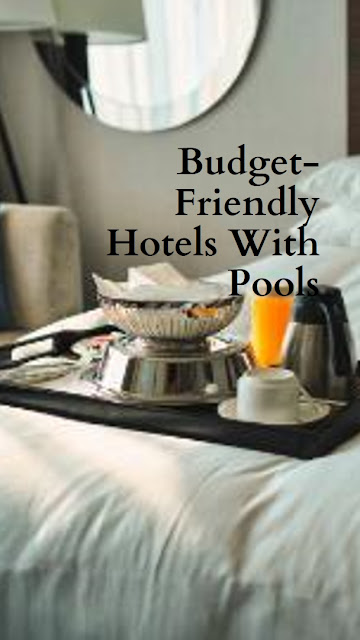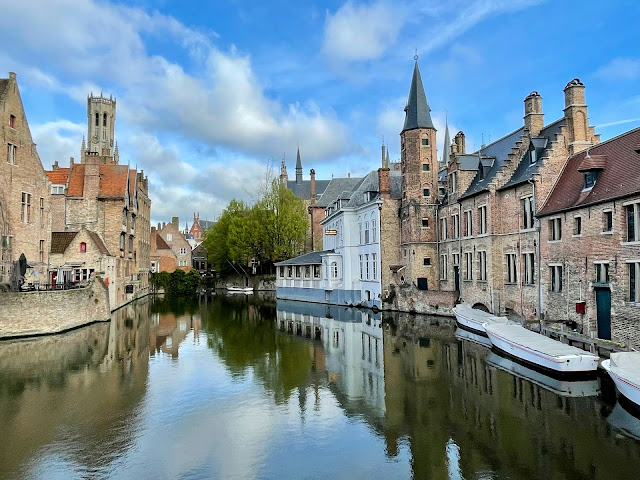Travel Guide to Hungary: Exploring History, Culture and Nature in the Heart of Europe
If you're looking for a unique and exciting destination in Europe, you might want to consider Hungary. This Central European country has a rich and diverse culture, stunning natural beauty, and a fascinating history. Whether you want to explore the vibrant capital of Budapest, soak in the healing thermal waters, or discover the charming countryside, Hungary has something for everyone.
In this blog post, I'll share with you some of the best places to visit in Hungary and give you some tips on how to make the most of your trip.
Budapest
Budapest is the most popular and visited city in Hungary, and for good reason. It's a stunning metropolis that straddles the Danube River, with the historic Buda district on one side and the modern Pest district on the other. Budapest is famous for its architecture, which ranges from medieval to Art Nouveau, as well as its cultural attractions, such as museums, galleries, theaters, and opera houses. Some of the highlights include:
The Parliament Building: This is one of the most iconic landmarks of Budapest, a majestic neo-Gothic building that houses the Hungarian National Assembly. You can take a guided tour of the interior and see the impressive dome, the grand staircase, and the crown jewels.
 |
| Parliament Building in Budapest |
The Castle Hill: This is a UNESCO World Heritage Site that contains some of the most important medieval monuments and museums in Budapest. You can visit the Royal Palace, the Matthias Church, the Fisherman's Bastion, and enjoy panoramic views of the city.
The Great Synagogue: This is the largest Jewish house of worship outside New York City, and a stunning example of Moorish Revival architecture. It has a rich history and a museum that showcases the Jewish heritage of Hungary.
The Thermal Baths: Budapest is known as the "City of Spas" because it has over 100 thermal springs that feed into various baths and pools. These are great places to relax and rejuvenate after a day of sightseeing. Some of the most famous ones are Széchenyi, Gellért, Rudas, and Király.
 |
| The Szechenyi Baths in Budapest, Hungary |
The Ruin Bars: These are unique venues that are located in abandoned buildings that have been transformed into eclectic bars and clubs. They are decorated with reclaimed materials and quirky antiques, and offer a lively atmosphere for drinking, dancing, and socializing. Some of the best ones are Szimpla Kert, Fogasház, Instant, and Anker't.
Lake Balaton
Lake Balaton is the largest lake in Central Europe and a popular summer destination for Hungarians and foreigners alike. It's about an hour and a half drive from Budapest, and it offers a variety of activities and attractions for all ages. You can swim, sail, fish, or sunbathe on the sandy beaches, or explore the surrounding towns and villages that have their own charm and character. Some of the places you shouldn't miss are:
 |
| Lake Balaton, Tihany |
Tihany: This is a peninsula that juts out into the lake and has a picturesque Benedictine abbey that dates back to the 11th century. You can also visit the lavender fields, the volcanic crater lake, and the folk museum.
Szigliget: This is a small town that has a medieval castle on top of a hill that overlooks the lake. You can climb up to the castle ruins and enjoy stunning views of the surroundings.
Badacsony: This is a region that is famous for its wine production, especially white wines made from local grapes. You can visit some of the vineyards and wineries and taste some of their products.
Keszthely: This is the largest town on the lake shore and has a lot of cultural and historical attractions. You can visit the Festetics Palace, which is one of the largest Baroque palaces in Hungary, or the Balaton Museum, which displays exhibits about the natural and cultural history of the lake.
Hévíz
Hévíz is a town near Lake Balaton that is home to one of the world's most unique natural wonders - the Hévíz Thermal Lake. This lake is the second-largest thermal lake in the world and remains warm throughout the year due to its geothermal springs. It's not just a popular tourist spot but also a sought-after destination for those seeking natural healing properties.
The thermal lake is said to have medicinal benefits, as its waters are rich in minerals like sulfur, calcium, and magnesium. Many people believe that bathing in these waters can help alleviate various health issues, particularly those related to joints, rheumatism, and skin conditions. Visitors can experience the therapeutic effects of the lake by taking a leisurely swim or enjoying a relaxing spa treatment at one of the surrounding wellness centers.
Apart from the thermal lake, Hévíz offers a charming town with picturesque streets, beautiful gardens, and plenty of opportunities to enjoy Hungarian cuisine at local restaurants. Strolling through the town, you'll discover unique shops selling souvenirs, handmade crafts, and local products, making it an ideal place to find memorable gifts to take back home.
Szentendre
Szentendre is a charming town that is located about 30 minutes north of Budapest. It's a popular day trip destination for those who want to escape the hustle and bustle of the city and enjoy some culture and nature. Szentendre is known for its artistic vibe, as it has been home to many painters, sculptors, and writers over the years. You can visit several museums and galleries in town, such as the Margit Kovács Ceramic Museum, which showcases the works of one of Hungary's most famous ceramic artists, or the Ferenczy Museum Collection, which displays paintings by Hungarian impressionists.
Szentendre is also known for its picturesque architecture and scenery. The town has a Mediterranean feel, with colorful houses, narrow, winding cobblestone streets, and charming cafés lining the riverfront. The Danube River itself adds to the town's allure, and you can take a relaxing boat ride along its gentle currents or simply sit by the riverside and soak in the serene atmosphere.
One of the highlights of Szentendre is the Open-Air Ethnographic Museum, also known as the Skanzen. This living museum showcases traditional Hungarian rural architecture and lifestyle from different regions of the country. You can explore old farmhouses, churches, and craftsmen's workshops, giving you a glimpse of Hungary's rural heritage.
For art enthusiasts, the town's art scene is thriving, with numerous galleries and workshops showcasing works by local artists. The artistic ambiance makes Szentendre an excellent place to pick up unique souvenirs, including handcrafted pottery, paintings, and other artistic creations.
Eger
For those interested in history and wine, Eger is an essential stop on any Hungarian journey. Located in the northern part of the country, Eger is renowned for its historic architecture, especially the Eger Castle, which played a crucial role in the Ottoman-Hungarian Wars. The castle offers breathtaking views of the town and surrounding countryside, making it a favorite spot for photography enthusiasts.
One of Eger's significant cultural highlights is its Bull's Blood wine, known locally as "Egri Bikavér." Wine lovers can explore the Eger Wine Region, which includes numerous wineries and cellars, offering wine tastings and insights into the winemaking process. Pairing the exquisite local wines with traditional Hungarian dishes is a treat you won't forget.
Tokaj
No visit to Hungary would be complete without experiencing the renowned Tokaj wine region. Located in the northeastern part of the country, Tokaj is famous for producing sweet dessert wines, especially the Tokaji Aszú, which is often referred to as the "Wine of Kings and King of Wines."
The unique microclimate of Tokaj, with its morning mists and sunny afternoons, creates the perfect conditions for the production of noble rot, essential for the development of the sweet and luscious flavors of the Aszú wines. Wine enthusiasts can explore the vineyards, learn about the traditional winemaking techniques, and, of course, savor the exceptional wines.
Do I need a visa to travel to Hungary? If you are a citizen of the European Union (EU) or a Schengen Agreement country, you do not need a visa for short-term visits to Hungary. However, travelers from non-EU countries should check the visa requirements specific to their nationality. Always verify visa regulations and entry requirements before planning your trip.
What is the best time to visit Hungary?
The best time to visit Hungary is during the spring (April to May) and autumn (September to October) when the weather is mild and pleasant. Spring brings blooming landscapes and vibrant festivities, while autumn offers colorful foliage and wine harvest celebrations. Summer (June to August) can be hot, especially around Lake Balaton, making it ideal for beachgoers.
What are the must-try Hungarian dishes?
Hungary's culinary scene is a delight for food lovers. Don't miss trying Hungarian Goulash, a hearty stew with tender beef and paprika; Lángos, a deep-fried flatbread topped with various savory or sweet toppings; Kürtőskalács (Chimney Cake), a spiral-shaped sweet pastry coated with sugar; and Dobos Torte, a mouthwatering layered sponge cake with chocolate buttercream.
Are English and other languages widely spoken in Hungary?
In major cities and tourist areas like Budapest, English is commonly spoken, especially in hotels, restaurants, and tourist attractions. However, in smaller towns or rural areas, English proficiency might be limited. Hungarian is the official language, and locals appreciate travelers making an effort to use basic Hungarian phrases.
How can I get around in Hungary?
Hungary has an efficient public transportation system, including trains, buses, trams, and the metro in Budapest. Inter-city travel is convenient and affordable by train, and Budapest's public transportation network is well-developed. Renting a car is also an option, but keep in mind that driving in the capital can be challenging due to traffic.
Are credit cards widely accepted in Hungary?
Credit cards, especially Visa and Mastercard, are widely accepted in hotels, restaurants, and shops in urban areas. However, in smaller establishments or rural regions, it's a good idea to carry some cash, as card acceptance may be limited.
Are there any customs or etiquette I should be aware of in Hungary?
Hungarians are generally hospitable and friendly. When greeting someone, a firm handshake and maintaining eye contact are common. It is polite to address people using their last names with appropriate titles (e.g., Mr., Mrs., Miss) until invited to use their first names. Tipping is customary in restaurants and for services like taxis; leaving around 10% of the bill is typical.
Hungary is a treasure trove of culture, history, and natural beauty, and these are just a few of the incredible places worth visiting during your trip. Whether you're exploring the vibrant streets of Budapest, relaxing in the thermal waters of Hévíz, or savoring the world-famous wines in Eger and Tokaj, Hungary promises a truly unforgettable adventure. So pack your bags, immerse yourself in Hungarian traditions, and let this enchanting country captivate your heart and soul. Happy travels!



Comments
Post a Comment
It's easy to leave a comment on our blog – anyone with a Google account can do it. We invite you to share your experiences by leaving a comment as well.